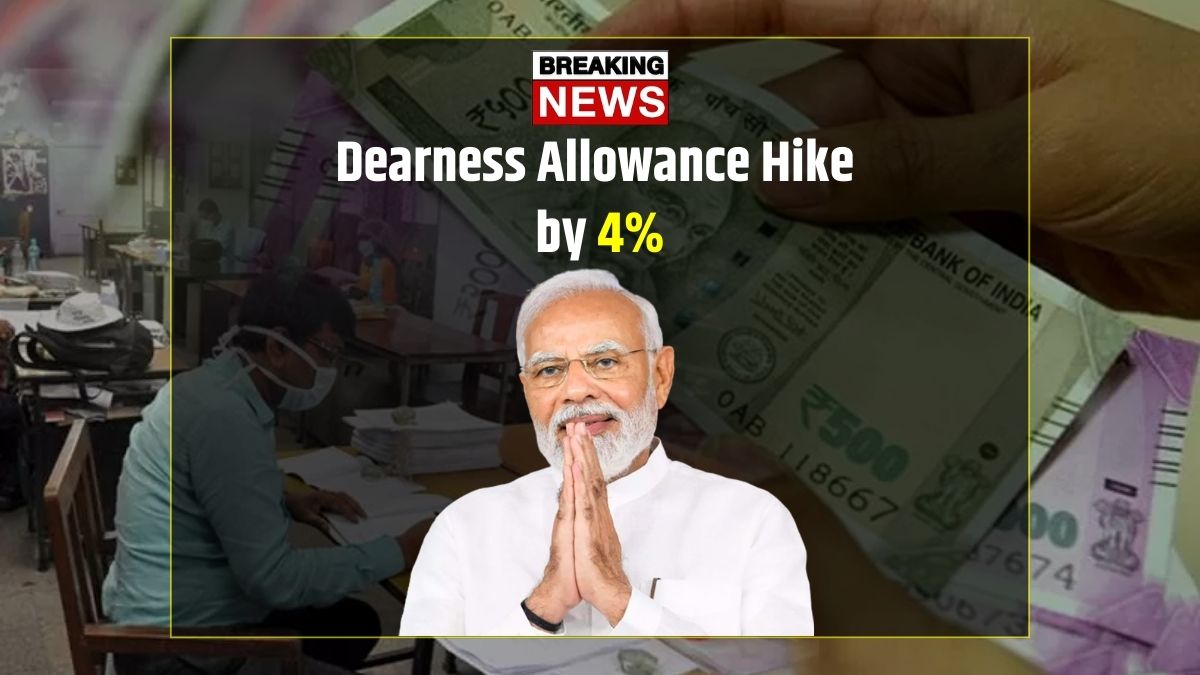Dearness Allowance Hike – Here’s some great news for central government employees and pensioners – the government has officially approved a 4 percent hike in Dearness Allowance (DA). This update comes as a much-needed relief for many households struggling with rising inflation. The increased DA will be reflected in the salary and pension slips starting this month, providing a financial cushion just in time.
Let’s break down what this hike really means, how it’s calculated, and what kind of changes you can expect in your paycheck or pension.
What is Dearness Allowance and Why Does it Matter?
Dearness Allowance is basically a cost-of-living adjustment that’s paid out to government employees and pensioners. With prices going up everywhere – from groceries to electricity – DA helps make sure that people don’t lose their purchasing power. The government reviews and adjusts this allowance twice a year, based on inflation rates.
In simple terms, DA is the government’s way of saying, “We know things are getting expensive, here’s a little extra to help you manage.”
Details of the Latest 4 Percent Increase
The most recent hike takes the total DA up to 50 percent of the basic pay or pension. This update affects more than 47 lakh central employees and over 68 lakh pensioners across the country.
Here are the key takeaways:
- The new DA rate is now 50 percent of the basic salary or pension.
- It applies from the current month.
- Employees and pensioners will receive the revised amount in their upcoming payments.
- Arrears for the previous month might also be added depending on the implementation.
What This Means for Your Salary
The actual salary increase depends on your current basic pay. Let’s take a few examples to understand this better:
- If your basic pay is 18000, your DA goes from 8280 to 9000, giving you an extra 720.
- For someone earning 35400, DA jumps from 16284 to 17700, an increase of 1416.
- If your pay is 56100, your DA rises from 25806 to 28050, which is a gain of 2244.
Higher pay bands will naturally see bigger jumps in absolute amounts, although the percentage increase remains constant across the board.
Pensioners Benefit Too
Retired government employees aren’t left out. This DA hike applies to them as well. If you’re receiving a pension of 30000, for example, your DA goes up from 13800 to 15000 — a straight 1200 increase. A pension of 50000 will now come with 25000 as DA instead of 23000 earlier.
For pensioners on a tight budget, this raise will definitely offer some breathing room.
How is DA Actually Calculated?
The government uses the All India Consumer Price Index (AICPI) to calculate DA. It checks how much the average consumer is spending on basic needs and compares that to a baseline index. The difference is then multiplied by a specific factor to arrive at the percentage hike.
For those curious about the formula:
- The average CPI for the past 12 months is calculated.
- The base CPI number from 2016 (which is 261.4) is subtracted from it.
- The result is then multiplied by 0.536 (as per the 7th Pay Commission).
- The final figure is the updated DA percentage.
What Sectors Will Feel the Impact?
It’s not just employees and pensioners who benefit from the DA hike. The entire economy gets a small push. With people now having a little more money in their hands, we can expect:
- A boost in consumer spending
- Higher retail sales in electronics, home goods, and fashion
- More activity in the housing and auto loan markets
- Growth in banking services due to increased savings and transactions
What’s Coming Next?
Experts are already predicting that there could be another DA revision in the coming months if inflation stays high. If current trends continue, we might see an additional 3 to 4 percent hike in the next cycle.
However, future increases will depend on:
- Consumer Price Index trends
- Fiscal capacity of the government
- Global inflation and economic conditions
The 4 percent DA hike is a timely move that will help millions deal with the rising cost of living. If you’re a central government employee or pensioner, you should check your updated payslip or pension statement this month to see how much extra you’re getting.
It’s always a good idea to stay updated with the latest announcements and ensure your bank details and account status are in order to avoid delays in receiving the revised amount.






